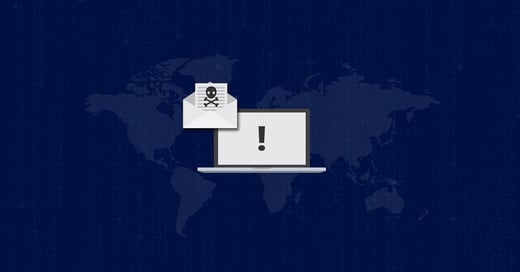Though organizations have increased spending on security products and talent, many IT leaders may feel as if the increased spending doesn't keep up with dollars lost to attacks. Research by Venafi notes a large percentage of today's CIOs believe they are "wasting millions on inadequate cybersecurity."
This is not to suggest the answer is to cut back. You can't do cybersecurity on a $0 technology or staffing budget. But one thing remains clear and cannot be argued, the threat vector is growing and will continue to grow. Putting your effort into the right places, you can achieve 24/7/365 compliance and strong defenses on a small budget. In this blog, you'll learn three aspects of security strategy with big impacts.
How to Make the Most of Small Information Security Budgets
If you feel as if you can't afford to keep up with threats, you're certainly not alone. Budgets are strained, but threats keep increasing—how do you maximize effectiveness on an already strained budget?
1. Check Your Processes
Is your security department operating in firefighting mode as opposed to a model built around structured processes?
Many of us have been within IT settings where processes are minimal. When a problem or vulnerability is discovered, the response is to throw money or custom code at the issue and hope it patches things up sufficiently.
The issue with a process-poor environment is that the wheel becomes reinvented every time a state of emergency is declared. You're not taking the cheapest or fastest approach to security because you're too busy putting out fires
Big information security on a small budget demands processes. Ideally, this should go beyond checklists to developing a process-based culture in which you:
- Assess identified security problems fully, using data whenever possible.
- Categorize and rank risks using quantitative methods.
- Take a standardized approach to resolving critical and ongoing issues.
- Regularly measure, test, and evaluate your controls.
2. Check Your Policies
Payment Card Industry Data Security Standards (PCI DSS) compliance demands an effective security policy. Even if your organization is not required to comply with standards for payment card information security, PCI's guideline on information security policy (Requirement 12) can be an effective baseline for evaluation:
- 12.1 "Establish, publish, maintain, and disseminate a security policy" that covers all PCI requirements. Review this policy annually and when your environment changes.
- 12.2 Develop daily operational security procedures.
- 12.3 Develop acceptable usage policies for critical technologies for all users, including remote access, wireless, removable electronic media, laptops, tablets, handheld devices, email, and the Internet.
- 12.4 Define security responsibilities for all personnel.
- 12.5 Assign security responsibilities to an individual or team.
- 12.6 Implement formal security awareness programs.
- 12.7 Screen potential hires to minimize insider risk.
- 12.8 Hold service providers accountable for PCI compliance, including annual verification of status.
- 12.9 Develop a plan for immediate security incident response.
Partnering with your human resources department to develop the policies necessary for a security-based culture can mean that IT isn't the only one fighting an uphill battle. The right policy makes it easy for IT security to do the right things daily while transferring responsibility and knowledge to the individual.
In addition to the written policy, IT shouldn't ignore the potential of policy-based administration to make a huge impact without extreme spending. With tools to set administrative rules around user permissions and access, you can achieve consistency and efficiency. In addition, using a tool for monitoring Active Directory can ensure that your policy-based administration doesn't move out of compliance or experience failure.
3. Check Your Software
There's a phenomenon in the consumer tech space known as "app fatigue" or feelings of being overwhelmed by the sheer amount of tech possibilities in app stores. Some tech trend experts believe that symptoms of app fatigue have begun to color the workplace. In late 2015, Sitrion's Daniel Craft noted this sentiment by stating "simply building an app is not success."
The same warning goes for purchasing ready-made security tools. Simply having it isn't going to boost your safeguards. In some cases, such as open-source tools that are incorrectly implemented, adding more tech to your portfolio could make your compliance and vulnerabilities worse.
With a growing number of endpoints and fringe devices within IoT tech, organizations in today's security management may need tools that can do it all. Perhaps instead of trying to juggle a dozen different applications to determine vulnerabilities, unusual traffic patterns, and critical file changes, just one tool can allow you to ensure that you're not missing anything obviously negative.
Most importantly, more effective tools can be less expensive—even state-of-the-art tools for real-time network monitoring and change intelligence. Never assume something is well outside your budget because it works incredibly well. Investing in a single tool like CimTrak for network-wide, real-time monitoring and change remediation can ensure your budget is really working for you.
CimTrak: Better Network-Wide Security and Cost-Efficient
At a lower price point than many competitors, CimTrak is a leading solution for real-time enterprise change intelligence. From the admin portal, security managers have the ability to understand real-time changes to each of their endpoints and remediate attacks before they devastate their enterprise. When each dollar of your security budget matters, CimTrak takes care of the heavy lifting so you can focus on process and policy improvements.
To learn more about CimTrak's innovative approach to compliance and real-time change intelligence, click here, or download our technical summary today.
Tags:
Cybersecurity
January 11, 2017




